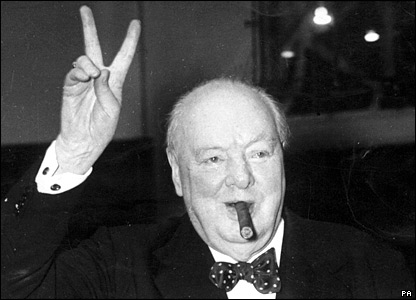
Winston Churchill is one of the most revered leaders in history. As the prime minister of Great Britain during World War II, he inspired the nation and the world with his passionate, compelling speeches. He was certainly one of the most influential persons in British history, and his speeches are consistently ranked as the best ever given. Paul Johnson, a Churchill scholar, writes in Churchill, “no man did more to preserve freedom and democracy and the values we hold dear in the West.” Here are a few lessons we can learn from Churchill’s magnificent oratory skills.
First, and perhaps most importantly, it’s possible to become a great speaker even if you’re not a natural at public speaking. Churchill himself was not born a great orator. In fact, he had a slight stammer and a lisp when he was young. He spent hours and hours crafting his speeches, practicing and perfecting each word. His good friend Lord Birkenhead said, “Winston has spent the best years of his life writing impromptu speeches.” He put in countless hours of work making his speeches flawless to incite inspiration in a desperate audience. His dedicated effort obviously made a difference to millions in an extremely trying time.
You don’t have to be a natural at presenting to be successful at it. Even one of the greatest orators of the twentieth century had to practice, practice and practice to perfect the craft. “Continuous effort– not strength or intelligence– is the key to unlocking our potential,” Churchill said. Keep practicing and perfecting your presentation, and your effort will pay off in the end.
Churchill spoke in short, crisp sentences, which gave his speeches a poignant directness. He got his point across quickly and effectively. While he was eloquent and articulate, he was also blunt and concise. This is an extremely effective way to present. It’s important to speak with eloquence, but it’s also necessary to be clear and blunt. Remember, the average person has an attention span of 18 minutes. Keep your material crisp and tight, yet engaging.
Like all great orators, Churchill emphasized his speech with rhythm and repetition. His speeches’ rhythmic manner caused the audience to hang on his every word, waiting with bated breath for what came next. And like always, repetition reinforced the point to which he was speaking. His most famous speech, We Shall Fight on the Beaches, given on June 4, 1940, employed both of these methods. Consider this quote from the speech: “A miracle of deliverance, achieved by valor, by perseverance, by perfect discipline, by faultless service, by resource, by skill, by unconquerable fidelity, is manifest to us all.” Notice the repetition with by, by, by, and say it aloud to hear the rhythm. It just sounds great.
Every presentation should have at least a smattering of these two aspects. Repetition is the easiest to use, in terms of employing its use and the effectiveness of doing so. The audience is guaranteed to better remember the information presented if you do so. Check the rhythmic feel of your speech when you’re practicing. Could you rearrange words to make it flow better, to make it sound better?
Churchill was also masterful at using vivid imagery. He spoke in a grand, epic way with brilliant words and moving description. He spoke in a way that painted a picture in the mind of the listener. This was especially important in the early twentieth century when the purely auditory radio had to suffice for information and entertainment. People wanted to paint a picture in their mind while listening to a speech, and Churchill achieved precisely that. Take, for example, this excerpt from We Shall Fight:
“They had to operate upon the difficult coast, often in adverse weather, under an almost ceaseless hail of bombs and an increasing concentration of artillery fire. Nor were the seas, as I have said, themselves free from mines and torpedoes. It was in conditions such as these that our men carried on, with little or no rest, for days and nights on end, making trip after trip across the dangerous waters, bringing with them always men whom they had rescued.”
Listeners can create a clear picture in their mind of the scene Churchill is describing. “Ceaseless hail of bombs,” “nor were the seas free from mines and torpedoes,” “days and nights on end.” This vivid description creates a scene, a remarkable scene that doesn’t leave the mind quickly. Use as much vivid imagery as possible throughout a presentation. Again, this is the kind of thing that sticks in the audience’s mind. It emphasizes the story aspect of a presentation. Audiences remember vivid, engrossing imagery.
Work some of Churchill’s magic into your next presentation. If you’d like some auditory inspiration from the Brit himself, listen or download a few of his most notable speeches here.
